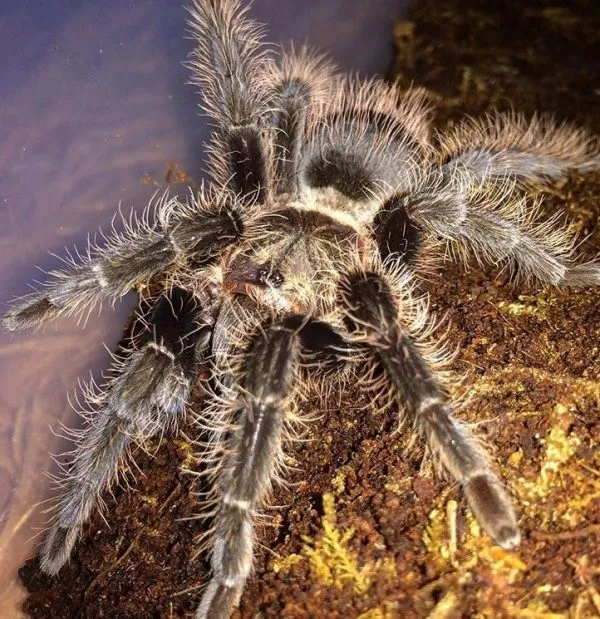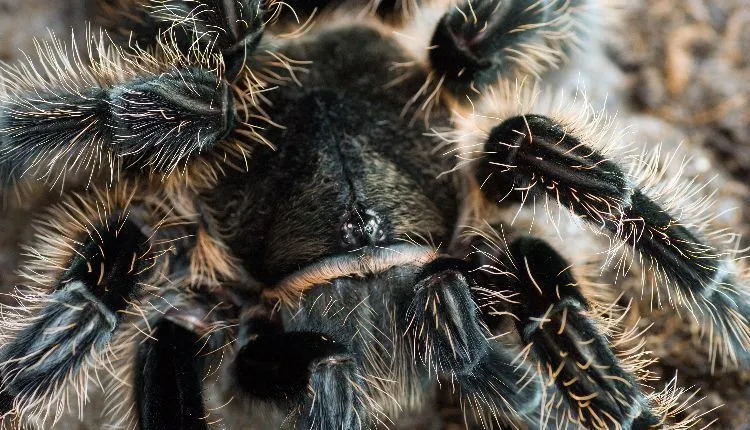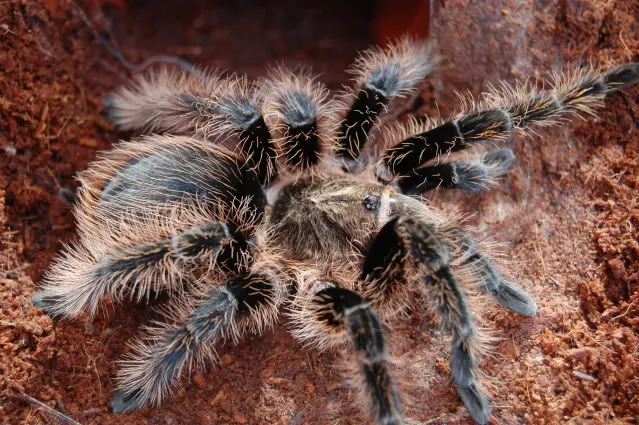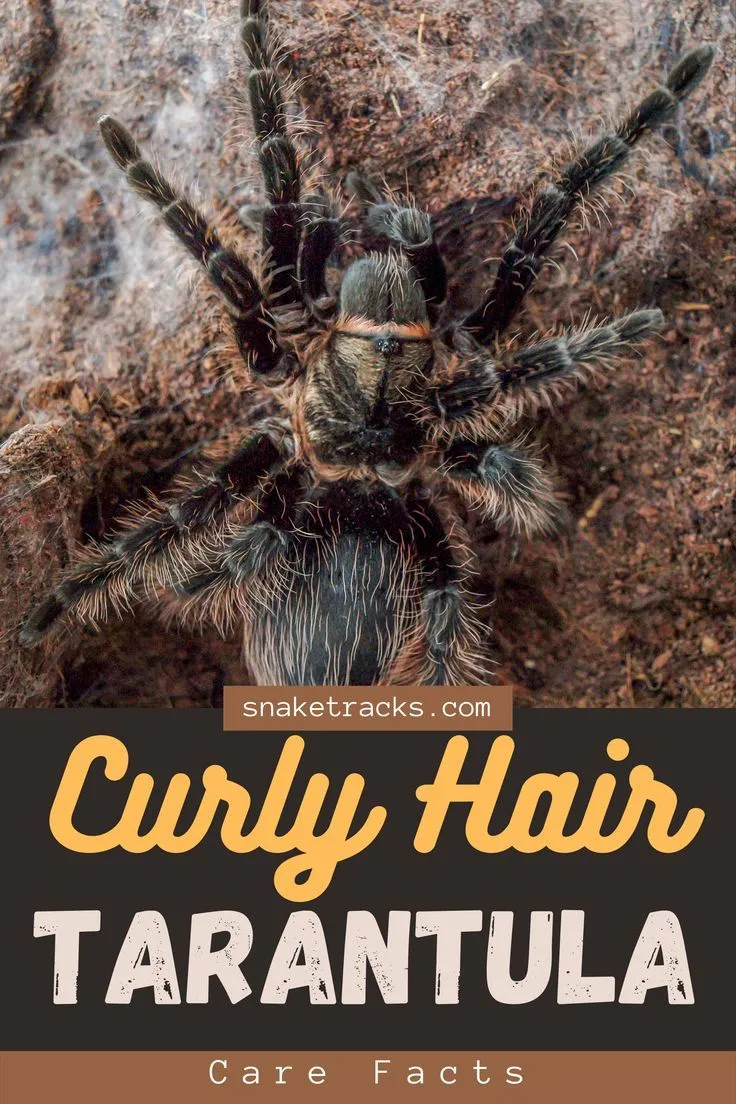Understanding Curly Hair Tarantula’s Habitat Needs
Curly hair tarantulas (Tliltocatl albopilosus) are fascinating creatures, and providing the right environment is crucial for their well-being. Native to the tropical regions of Central America, these tarantulas thrive in a warm and moderately humid environment. Their natural habitat provides them with specific temperature and humidity levels that are essential for their health, molting process, and overall comfort. Replicating these conditions in captivity is key to ensuring your curly hair tarantula lives a long, healthy life. Understanding these needs is the first step in creating a suitable habitat that mimics their natural environment as closely as possible. This involves more than just providing a terrarium; it requires careful consideration of temperature, humidity, substrate, and shelter. Neglecting these elements can lead to stress, illness, and even premature death for your pet.
Ideal Temperature Range for Curly Hair Tarantulas
The ideal temperature range for a curly hair tarantula is between 75°F to 80°F (24°C to 27°C). This temperature range is crucial for their metabolic processes, including digestion and molting. Maintaining a consistent temperature within this range will help your tarantula stay active, eat properly, and molt successfully. Temperatures outside of this range can lead to various health issues. If the temperature is too low, the tarantula’s metabolism slows down, leading to a loss of appetite, lethargy, and potentially, health problems. Conversely, temperatures that are too high can be equally dangerous, causing dehydration and stress. Using a reliable thermometer is essential to monitor the temperature inside the enclosure accurately. Place the thermometer in a spot where the tarantula spends most of its time, ensuring that you get an accurate reading of the ambient temperature.
Impact of Temperature on Tarantula Health

Temperature plays a vital role in the overall health and well-being of your curly hair tarantula. It affects various biological processes, including their appetite, activity levels, and molting frequency. When the temperature is optimal, your tarantula will exhibit normal behaviors such as feeding regularly and moving around its enclosure. During the molting process, proper temperature ensures the tarantula can shed its exoskeleton correctly. Incorrect temperatures can lead to several health complications. Low temperatures can slow down the tarantula’s metabolism, leading to a loss of appetite and potentially, a compromised immune system, making it more susceptible to diseases. High temperatures can cause dehydration and heat stress, which can be fatal. Consistently monitoring and maintaining the correct temperature range will help prevent these issues and contribute to a healthy, thriving tarantula.
Choosing the Right Heating Equipment
Selecting the appropriate heating equipment is essential for maintaining the ideal temperature for your curly hair tarantula. There are several options available, each with its advantages and disadvantages. The most common heating devices include heat lamps and heating pads. When choosing a heating device, consider the size of your terrarium, the ambient temperature of your home, and the specific needs of your tarantula. Always prioritize safety and ensure that any heating equipment is used correctly to prevent burns or other harm to your pet. Furthermore, it’s crucial to select equipment that is specifically designed for reptile or invertebrate use. Avoid using household heating devices, as they are not designed to meet the unique requirements of a tarantula’s habitat.
Heat Lamps vs Heating Pads
Heat lamps and heating pads are the two most common heating options for curly hair tarantulas. Heat lamps, usually ceramic heat emitters (CHEs), are designed to provide heat from above. They are particularly useful in larger enclosures or environments that are generally cooler. CHEs emit infrared heat without producing light, which is beneficial for nocturnal tarantulas. On the other hand, heating pads, also known as under-tank heaters (UTHs), are placed under the terrarium to provide heat from below. They are often preferred for smaller enclosures and are a good option for maintaining a consistent temperature. When choosing between the two, consider the size of your terrarium and the tarantula’s specific needs. You should also be aware of the potential downsides, such as the risk of burns if the tarantula gets too close to the heat source.
Setting Up the Heating System for Your Tarantula

Setting up the heating system correctly is crucial for providing a safe and comfortable environment for your curly hair tarantula. Begin by selecting the appropriate heating equipment based on your enclosure size and the ambient temperature. If using a heat lamp, position it above the terrarium, ensuring there’s enough space between the lamp and the enclosure’s top to prevent overheating. For a heating pad, place it under one side of the terrarium, creating a thermal gradient—a range of temperatures within the enclosure. This gradient allows the tarantula to move to an area with its preferred temperature. Always connect the heating equipment to a thermostat to regulate the temperature accurately. This prevents the temperature from fluctuating and ensures a stable environment. Regularly monitor the temperature using a reliable thermometer, and make adjustments as needed to maintain the ideal range.
Placement of Heat Source
The placement of the heat source is critical for creating a safe and effective heating system. If using a heat lamp, position it above the terrarium, ensuring it is securely mounted to prevent it from falling. The distance between the lamp and the enclosure’s top should be enough to prevent the tarantula from getting too close and potentially burning itself. With heating pads, place them under one side of the terrarium. This creates a temperature gradient, allowing the tarantula to choose its preferred temperature. Avoid covering the entire bottom of the terrarium with a heating pad, as this could overheat the enclosure. Make sure the heating source does not come into direct contact with the substrate, as this could cause the substrate to dry out or become too hot. Always monitor the temperature with a thermometer placed at different locations within the enclosure to ensure an even and safe temperature distribution.
Monitoring and Maintaining Temperature
Regular monitoring and maintenance are essential for ensuring the heating system functions correctly and the tarantula’s environment remains ideal. Use a reliable thermometer to monitor the temperature inside the enclosure regularly. Digital thermometers with probes are especially useful, as you can place the probe at different locations to measure the temperature gradient. Check the temperature at least once a day, or even more frequently, especially during extreme weather conditions. If the temperature fluctuates, make necessary adjustments to the heating equipment settings. Keep the heating equipment clean and in good working order. Replace any damaged or malfunctioning equipment immediately. Consistent monitoring and maintenance ensure the tarantula’s health and well-being by providing a stable and comfortable environment.
Troubleshooting Heating Issues

Even with careful planning, you may encounter heating issues. Common problems include inconsistent temperatures, overheating, and equipment failure. If the temperature is too low, check the wattage of your heating equipment and ensure it is appropriate for the size of the enclosure. You might need to upgrade to a higher-wattage lamp or a more powerful heating pad. If the enclosure is overheating, try adjusting the thermostat or moving the heat source further away from the enclosure. Make sure there’s proper ventilation to help regulate the temperature. If your heating equipment fails, immediately replace it with a new one and monitor the temperature closely. Always have a backup plan, such as a spare heating pad or lamp, in case of emergencies. Regularly inspect your heating equipment for any signs of wear and tear, and replace any damaged components promptly. Early detection and resolution of these issues will help maintain a stable environment for your tarantula.
Common Problems and Solutions
Several common problems can affect the heating system for a curly hair tarantula. One issue is inconsistent temperatures. This can be caused by faulty thermostats, inadequate heating equipment, or improper placement of the heat source. To solve this, ensure your thermostat is accurate and properly calibrated. Use a digital thermometer to verify the temperature at various points within the enclosure. Another common problem is overheating, which can result from using too much heat or placing the heat source too close to the enclosure. To address this, adjust the thermostat settings, increase the distance between the heat source and the enclosure, or improve ventilation. Equipment failure, such as a broken heating pad or lamp, is another potential issue. Always have a spare heating source available and regularly inspect your equipment for any signs of damage. By being proactive and addressing these common problems, you can ensure a stable and safe environment for your tarantula.
Ensuring Proper Ventilation
Proper ventilation is just as important as maintaining the correct temperature. It helps prevent the buildup of humidity and harmful gases within the enclosure, promoting a healthy environment for your curly hair tarantula. Ensure your terrarium has adequate ventilation, such as air vents or a screen top. Avoid blocking these vents, as this can trap moisture and increase humidity levels excessively. The ventilation helps regulate humidity levels and prevents the growth of mold and bacteria, which can be detrimental to your tarantula’s health. While maintaining appropriate humidity is crucial, excessive humidity can lead to health issues. The ideal humidity level for curly hair tarantulas is around 60-70%. If you find the humidity levels are too high, increase ventilation. Make sure that your enclosure has the correct balance of temperature, humidity, and ventilation to promote your tarantula’s well-being.
